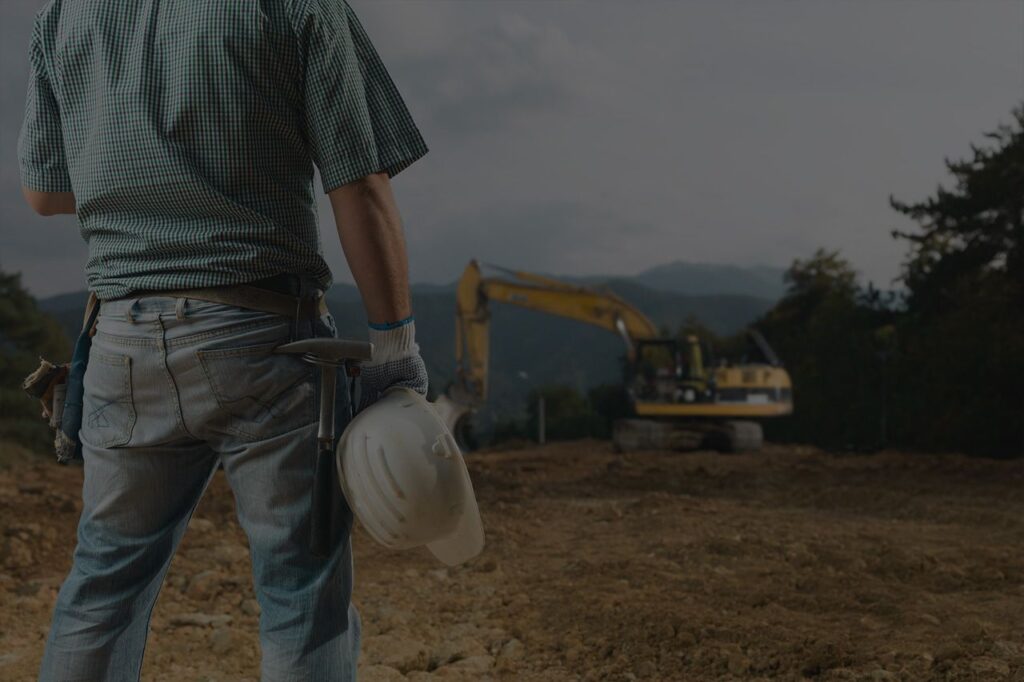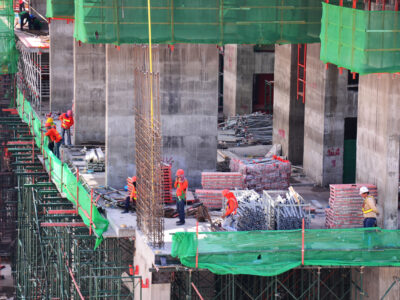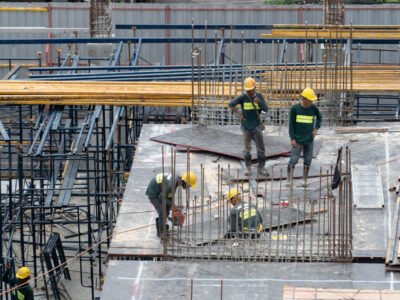The Importance of Steel Reinforcement in Dubai’s High-Rise Construction
In a city that symbolizes architectural ambition and futuristic skylines, Dubai’s high-rise construction industry stands as a marvel of modern engineering. From the world’s tallest tower, the Burj Khalifa, to the rapidly expanding skyline dotted with skyscrapers, one vital component keeps these towering structures standing tall and secure: steel reinforcement.
This article takes a deep dive into the importance of steel reinforcement in Dubai’s high-rise construction, uncovering why it is considered the backbone of skyscraper stability, safety, and sustainability.
- Understanding Steel Reinforcement: What Is It?
Steel reinforcement, often referred to as rebar (short for reinforcing bar), is a steel rod or mesh embedded into concrete to increase its tensile strength. While concrete is incredibly strong under compression, it’s relatively weak under tension. Steel compensates for this weakness, creating a composite material that can withstand both compressive and tensile forces — making it ideal for high-rise buildings.
- Why Steel Reinforcement Is Non-Negotiable in Skyscrapers
In high-rise construction, the stakes are literally higher. Structures must withstand:
- Heavy vertical loads
- Wind pressure
- Seismic activity
- Thermal expansion and contraction
Concrete alone cannot bear these dynamic stresses. Steel reinforcement ensures ductility, meaning buildings can flex slightly without breaking — a critical feature in tall buildings.
- Dubai: The Global Epicenter of Skyscraper Innovation
Dubai is not just a city; it’s a testament to architectural and engineering excellence. With hundreds of high-rises and mega-structures, it holds multiple world records for building height and design.
But behind the glamor lies intense planning, engineering, and execution — and at the heart of all that? Steel reinforcement.
- Climatic Challenges in Dubai and the Role of Steel
Dubai’s climate presents extreme environmental conditions: high temperatures, humidity, and salt-laden winds from the sea. These factors pose threats to the durability of buildings. Here’s how steel reinforcement helps mitigate these risks:
- Thermal resistance: Steel and concrete expand and contract similarly, reducing cracking.
- Corrosion resistance: High-quality rebar with anti-rust coatings resists corrosion from salty air.
- Structural integrity: Reinforced frameworks prevent structural failure under extreme heat and temperature fluctuations.
- Types of Steel Reinforcement Used in Dubai’s Construction Sector
Dubai’s engineers and architects don’t just use standard rebar. They carefully choose the type of steel reinforcement based on structural requirements:
- Mild Steel Bars: Common for light reinforcement needs.
- Deformed Bars (TMT): Widely used for their high strength and bonding ability.
- Stainless Steel Rebars: Used in highly corrosive environments.
- Welded Wire Fabric: For floor slabs and walls.
- Prestressed Steel: Applied in bridges and large-span buildings.
- The Science Behind Steel and Concrete Bonding
The strength of a building relies heavily on how well steel bonds with concrete. When properly embedded, the ribbed surface of steel bars locks into the concrete, creating a unified structure that behaves as one under load.
In high-rise structures, this bond strength is meticulously calculated to ensure load distribution across all levels, maintaining building integrity during storms or seismic events.
- How Dubai’s Building Codes Ensure Reinforcement Standards
Dubai has some of the strictest building codes and regulations in the world. The Dubai Municipality, Trakhees, and Dubai Civil Defence govern construction quality — especially regarding steel reinforcement practices.
These regulations ensure:
- Certified materials are used.
- Adequate spacing, cover, and anchorage of bars.
- Regular testing of tensile strength and corrosion resistance.
- Periodic inspections throughout the construction phases.
- Innovations in Steel Reinforcement Technology in Dubai
Dubai is no stranger to innovation, even in materials science. The construction industry is actively incorporating cutting-edge reinforcement technologies such as:
- Fiber-Reinforced Polymers (FRP) as alternatives in non-load-bearing applications.
- Epoxy-coated rebars to combat corrosion in coastal zones.
- Smart rebar integrated with sensors for real-time structural health monitoring.
- Steel Reinforcement in Landmark Projects in Dubai
Let’s explore a few iconic structures where steel reinforcement played a crucial role:
- Burj Khalifa: The tallest man-made structure in the world used 39,000 tonnes of steel rebar. The core was heavily reinforced to withstand seismic activity and desert winds.
- Dubai Frame: This monumental landmark utilized corrosion-resistant steel to preserve aesthetics and structure under direct sunlight and salt-laden air.
- Museum of the Future: Its complex torus shape required custom-cut, curved reinforcement bars — an engineering marvel in itself.
- Cost vs. Safety: Why Cutting Corners on Reinforcement Is Dangerous
While some developers are tempted to reduce costs, compromising on steel reinforcement is extremely risky. Poor-quality or insufficient rebar can lead to:
- Cracks and deformation
- Structural instability
- Shortened building lifespan
- Safety hazards during natural calamities
In Dubai, regulatory bodies penalize contractors heavily for non-compliance, ensuring public safety remains top priority.
- Sustainability and Steel: Building Green Skyscrapers
Steel is one of the most recyclable construction materials. In Dubai’s push toward eco-friendly building practices, many developers opt for:
- Recycled steel bars
- Eco-friendly coatings
- Green-certified suppliers
This not only reduces the carbon footprint of construction but also aligns with LEED certifications for sustainable building.
Moreover, longer lifespan due to reinforced strength reduces the need for repairs and reconstruction — a win for both economy and environment.
- Choosing the Right Contractor for Reinforcement Work
Selecting a contractor with expertise in steel reinforcement in Dubai is critical. Key things to look for include:
- Proven track record in high-rise projects
- Certified materials and suppliers
- Skilled labor and in-house engineers
- Compliance with local building regulations
- Commitment to quality and safety
Partnering with a professional steelwork and contracting company ensures seamless project execution, from blueprint to finish.
To sum it up, steel reinforcement in Dubai’s high-rise construction is not just a structural necessity — it’s the unsung hero of architectural achievement. In a city where the skyline continues to rise with bold ambition, reinforced concrete remains the trusted foundation upon which dreams are built.
From resisting extreme weather, ensuring seismic safety, to enabling breathtaking designs, steel is the invisible force that makes visible wonders possible.
So, whether you’re a developer, architect, or investor — never underestimate the power of proper reinforcement. After all, what’s seen in Dubai’s skyline is only possible because of what lies within.
You may also like
Recent Posts
-
How Subcontractors Like MVN Contracting Add Value to Large ConstructionProjectsMay 16, 2023/mvncontracting2015@gmail.com/0 comments
-
Top 5 Benefits of Choosing Specialized Steel & Carpentry Services in UAE ProjectsMay 16, 2023/mvncontracting2015@gmail.com/0 comments
-
The Importance of Steel Reinforcement in Dubai’s High-Rise ConstructionMay 16, 2023/mvncontracting2015@gmail.com/0 comments
PHOTO STREAM









